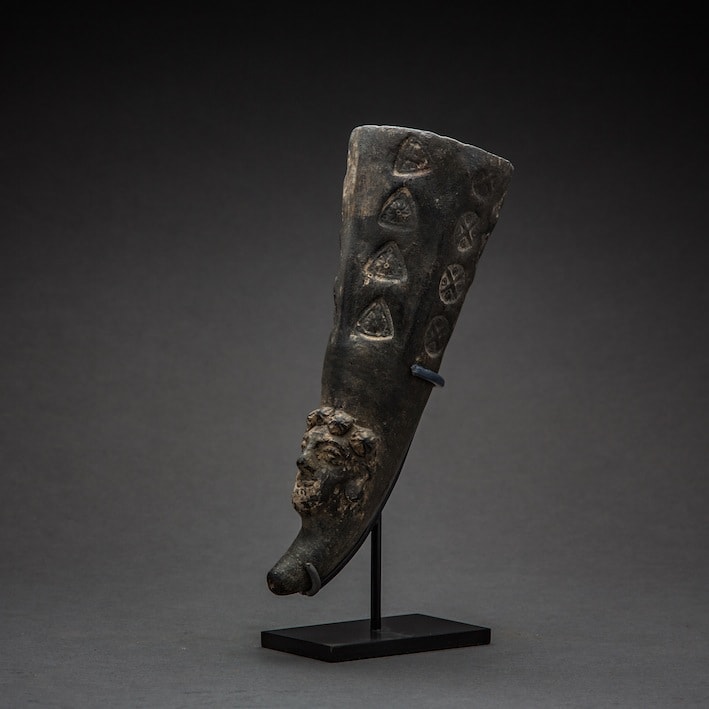Rhyton with Human Head, 300 BCE - 100 BCE
Schist
21.3 x 7.6 cm
8 3/8 x 3 in
8 3/8 x 3 in
SF.063
Further images
When Alexander the Great conquered the Persian Empire, he acquired all its outlying provinces including Bactria. Greek forces then established and maintained control in Bactria. After Alexander’s death, his kingdom...
When Alexander the Great conquered the Persian Empire, he acquired all its outlying provinces including Bactria. Greek forces then established and maintained control in Bactria. After Alexander’s death, his kingdom was divided among his generals and Bactria became part of the eastern section, ruled by the Seleucid Dynasty. There was extensive immigration of Greeks who found several cities based on the Greek model complete with gymnasiums and amphitheatres. Later, the Greco-Bactria Kingdom asserted its independence, ruling the areas of Bactria and Sogdiana, comprising today's northern Afghanistan and parts of Central Asia, the easternmost area of the Hellenistic world, from 250 to 125 BCE. The expansion of the Greco-Bactrians into northern India from 180 BCE established the Indo-Greek Kingdom, which was to last until around 10 CE. The Greco-Bactrians were known for their high level of Hellenistic sophistication, and kept regular contact with both the Mediterranean and neighbouring India. They were on friendly terms with India and exchanged ambassadors.









